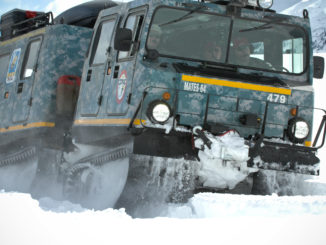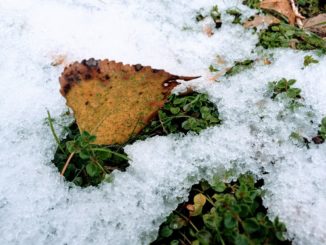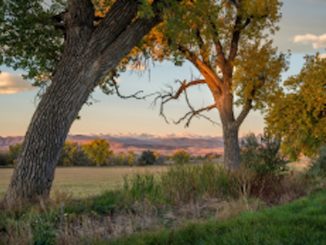
Why I Like Shoveling Snow
Not very long ago after every substantial snow, I would wait…
watching the weather and hopeful that the melting point would come before the sidewalk-clearing 24-hour deadline.
“Residents are required to remove snow and ice from the public sidewalk adjacent to their property within 24 hours of accumulation,” states the municipal code of that giant homeowner’s association that we call the City of Fort Collins, which I do admit makes this a safe and pretty place to live.
I would debate the meaning of “accumulation.” Does it mean after the snow has finished floating to the ground or when there is merely more than a dusting? More than once, I acknowledge with some shame, a notice was tacked to my door for delinquent snow removal behavior.
And then a couple of things happened. First I became both health conscious and efficiency-minded. Back in the day (and I am old enough to say that), when I was an 8-to-5er, I started every weekday at the gym, rising at 5 a.m. to guzzle a latte on my morning commute and hit the gym for cardio, strength training, an economical shower, a whole grain muffin and a smoothie before heading off to the cubicle. It worked for me then. I was a productive beast.
Calorie Burning Chores
And now? Still a productive beast. But with a mindset for my modern age. No more sit-all-day job, burnt out from the gym years of wiping sweat from vinyl benches and bike seats and being scheduled to the minute, I want more outside time and less rushing here and there. So I’ve come to love the calorie-burning chores I used to avoid: sweeping (burns 136 calories per 30 minutes), weeding and planting (150 per 30), raking, digging, hauling (200 per 30), sawing and splitting wood (200 per 30), and yes, shoveling snow, which burns a whopping 223 calories per 30 minutes.
Instead of avoiding this previously considered abhorrent activity, I now feel deprived if I don’t get to do it. I shovel not only the sidewalk, but the driveway, and occasionally even the neighbor’s walk. I embrace the quiet afforded by a blanketed landscape, hollering hello to any neighboring shovelers, and we talk of how we prefer the shovel to the blower for the quiet and the physicality.
Snow and Water
Right about the time that I was streamlining my life, I began my study of water and developed the film, Watering the West: A Water Western STARRING the Cache la Poudre River. Suddenly shoveling snow meant more than even burning calories and getting outside.
Now as I move the snow from the walk or driveway to my lawn I imagine how I am contributing that moisture to the grasses, plants, and dormant seeds lying in wait to poke through only with the slight warming of springtime soils. I think of what I heard years ago, that partly true phrase that made me want to hoard my snow: “It takes 10 inches of snow to make 1 inch of water.” “Well,” I thought, “that’s 1 inch of water that I won’t have to buy from the city.” So being of a freelancer’s frugal nature, I embrace the shovel and burn those calories as I tally the 10 to 1 that will water my lawn. But, not so fast, says Dr. Steven Fassnacht.
Measuring Snowpack
The Colorado State University Snowpack Hydrology Professor can be found every spring around May 1st at Cameron Pass where he sends his grad students into the forest at peak snows with data sheets, probes, GPSes, and synchronized watches, to traverse transects and measure snow depth. Then, with students well into the woods, he hops into a freshly dug Fassnacht-sized hole in the snow and plunges what resembles a trowel with triangular sides into one smoothed wall. After leveling the snow in the trowel like creating a level tablespoon of baking powder with the back of a butter knife, he places it on a tared scale. And this is how Fassnacht knows that 10 inches of snow to 1 inch of water is only a “rule of thumb.”
“In Colorado we’re in an area where we have light fluffy snow,” says Fassnacht. “The snow where you can pfoof (as he blows into his open hand), blow it off your car wind screen when you head out to the ski resort.” Which makes the fresh pow that skiers love to chase much less dense than a 10 to 1 ratio.
When Fassnacht digs in the snow, it’s all the way to the dirt, scooping and tossing snow, 3, 4, 5 feet over the side. Right about when most of his six-foot frame disappears from view, he hits bottom and brush where water is already running along the surface beneath the snowpack as the warmth of the sun on the topmost layer causes moisture to trickle down.
With his 1 liter wedge cutter he cuts out and weighs a sample of each layer all the way down the pack, observing as he does that snow density varies here from a mere 40% water at the top of this “old snow” heap, to the mushy stuff at the bottom, which can be up to 60% water.
Fassnacht measures both the depth of this snow hole and the density of every layer to determine how much water is stored in the snowpack reservoir this year. For as the layers start to drop into one another until all of that snow is first 60% water and then no longer a solid at all, but the liquid gold that runs down the Cache la Poudre River into reservoirs, ditches, and diversions, then onto our lawns and farms, slurped up by humans, vegetables and livestock, it will undoubtedly be helpful to know how much water is available for immediate use and to save for a non-rainy day.
As Dr. Fassnacht digs himself into a hole in the snow, I scoop my own snow onto the lawn, fruit trees, and wild garden, grateful maybe that I don’t have five feet to move, but also wondering how much money I would save on water as five feet of snow took its time trickling into the roots of my wildflowers, shrubs, trees, and dandelions. There was hardly enough snow this time to excite me, so little in fact that I felt compelled to ladle the driveway snow onto the garden as well. But it’s snowing again, so there’s hope yet for another good workout and a substantial snowy lawn watering.
Support Northern Colorado Journalism
Show your support for North Forty News by helping us produce more content. It's a kind and simple gesture that will help us continue to bring more content to you.
BONUS - Donors get a link in their receipt to sign up for our once-per-week instant text messaging alert. Get your e-copy of North Forty News the moment it is released!
Click to Donate



